History
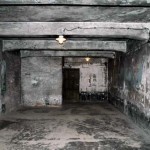 In the United States, 9-11 has become synonymous with the attacks on the World Trade Center, the Pentagon, and the downed plane in Shanksville, Pennsylvania. It is a day that we all look back to a day when, by a horrific act of terrorism, thousands of people died. As a collective people, we vowed never to forget. As United States citizens, however, we seldom give any serious thought to such days of rememberance in other countries. I suppose that is natural to a degree, but sometimes there are events in history that are so horrible that we can’t forget them. Such is the case with the Holocaust and the horrific treatment of the Jewish people at that time.
In the United States, 9-11 has become synonymous with the attacks on the World Trade Center, the Pentagon, and the downed plane in Shanksville, Pennsylvania. It is a day that we all look back to a day when, by a horrific act of terrorism, thousands of people died. As a collective people, we vowed never to forget. As United States citizens, however, we seldom give any serious thought to such days of rememberance in other countries. I suppose that is natural to a degree, but sometimes there are events in history that are so horrible that we can’t forget them. Such is the case with the Holocaust and the horrific treatment of the Jewish people at that time.
During the Holocaust years, Nazi Germany murdered six million Jews. The Nazi persecution of the Jews began in 1933, but the mass murder was committed during World War II, over a period of just four and a half years. Most of the murders took place between April and November of 1942. In just 250 days in which they murdered about two and a half million Jews. They had no real criteria for who lived and who died, except the ability to work. The killing only slowed down only when they began to run out of Jews to kill. The murders finally stopped when the Allies defeated them.
The Jewish people had now way to escape. They had been captured, dragged from their homes, and taken by  railroad in cattle cars to camps like Auschwitz, where the men were separated from the women and children, many of whom were killed right away, while the men were made to be slave labor…for as long as their strength held out. Once they were no longer useful, they were sent to the gas chamber. Being Jewish was considered a crime, punishable by death. There was no need for a trial in the eyes of the Nazis. If you were Jewish, you had to die. It was a horrible time in Jewish history, and it wasn’t the first time. It was just the most recent time in history. The Jewish people, like the people of the United States, had a need to remember the lost. A need to vow never to forget. That day is today. Yom Ha’Shoah, which means Holocaust Day, begins and sunset. In honor of those lost Jewish people, I will remember.
railroad in cattle cars to camps like Auschwitz, where the men were separated from the women and children, many of whom were killed right away, while the men were made to be slave labor…for as long as their strength held out. Once they were no longer useful, they were sent to the gas chamber. Being Jewish was considered a crime, punishable by death. There was no need for a trial in the eyes of the Nazis. If you were Jewish, you had to die. It was a horrible time in Jewish history, and it wasn’t the first time. It was just the most recent time in history. The Jewish people, like the people of the United States, had a need to remember the lost. A need to vow never to forget. That day is today. Yom Ha’Shoah, which means Holocaust Day, begins and sunset. In honor of those lost Jewish people, I will remember.
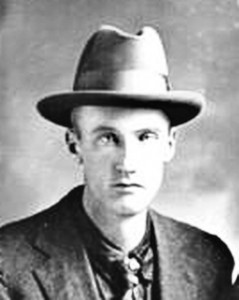 My husband, Bob’s great grandfather, Chester Leary worked for the railroad for most of his adult life. As a railroad worker, I’m sure he saw his share of close calls and accidents over the many years he worked there. Many railroad accidents make the national news, of course, but it’s possible they didn’t so often many years ago, because communication wasn’t quite as good. Nevertheless, if you lived near the train wreck, I’m sure you heard about it. I’m also sure that railroad yard accidents were a somewhat common occurrence. There is so much that goes on in a railroad yard, that sometimes things get missed, and an accident happens, but in my research for this story, I couldn’t find the accident in question here, or in fact, much information about very many railroad yard accidents at all. Maybe they just weren’t a news worthy event, unless someone was killed in the accident.
My husband, Bob’s great grandfather, Chester Leary worked for the railroad for most of his adult life. As a railroad worker, I’m sure he saw his share of close calls and accidents over the many years he worked there. Many railroad accidents make the national news, of course, but it’s possible they didn’t so often many years ago, because communication wasn’t quite as good. Nevertheless, if you lived near the train wreck, I’m sure you heard about it. I’m also sure that railroad yard accidents were a somewhat common occurrence. There is so much that goes on in a railroad yard, that sometimes things get missed, and an accident happens, but in my research for this story, I couldn’t find the accident in question here, or in fact, much information about very many railroad yard accidents at all. Maybe they just weren’t a news worthy event, unless someone was killed in the accident.
In fact, I wouldn’t have known about this train wreck at all, except that Bob’s cousin, Joe Brown sent me the picture of the wreck, with Chester Leary in the picture. The picture had the date of the accident listed on the picture, so I know that the date is correct…May 2, 1919. Nevertheless, when I looked for information on that train wreck in Forsyth, Montana in the railroad yard, I found absolutely nothing. To me that is such an odd thing. My curious mind wants to know more about how this accident happened. Was someone not paying attention to the trains coming in and out of the yard? Was anyone hurt? When did electronic tracking of the trains come into being, and would that have made a difference, since it all happened in the yard?
![Train Wreck at Forsyth, MT]pm yard May 2, 1919 Chester Leary](https://carynschulenberg.com/wp-content/uploads/2016/01/Train-Wreck-at-Forsyth-MT-yard-May-2-1919-Chester-Leary-300x198.jpg) Unfortunately, Bob’s great grandfather is no longer with us, and in fact he passed away in 1950, before either of us were born, so we couldn’t have possibly asked such a question, and wouldn’t have know to had we been born earlier. I’m sure his grandmother, Vina Hein knew what happened, because she was probably told all about it by her dad, Chester Leary. I don’t know if her dad was involved, or not, but I’m sure that would have been a story told around the dinner table that night. I really wish I could have had the opportunity to ask Bob’s great grandfather or my grandfather about all of their railroad experiences, because I have to think that it would have been very interesting to hear about it all. Especially about when things went very wrong.
Unfortunately, Bob’s great grandfather is no longer with us, and in fact he passed away in 1950, before either of us were born, so we couldn’t have possibly asked such a question, and wouldn’t have know to had we been born earlier. I’m sure his grandmother, Vina Hein knew what happened, because she was probably told all about it by her dad, Chester Leary. I don’t know if her dad was involved, or not, but I’m sure that would have been a story told around the dinner table that night. I really wish I could have had the opportunity to ask Bob’s great grandfather or my grandfather about all of their railroad experiences, because I have to think that it would have been very interesting to hear about it all. Especially about when things went very wrong.
 Sixty years…it is an age that many people dread, but for some reason, it just doesn’t bother me. When I look at my life, I find that there are memories over the past six decades that I will always want to keep in my memory files, but would I go back in time, if I could? No, I don’t really think I would. Each event in my life had it’s time and it’s place in the years of my life, and one would not fit in with the other. Knowing what I know today, would without doubt, detract from the memory of a different time, because I would know that someday loved ones would be gone, or children and grandchildren would move away. It would only serve to dim the brightness that goes along with a memory that carries with it, a promise of the future.
Sixty years…it is an age that many people dread, but for some reason, it just doesn’t bother me. When I look at my life, I find that there are memories over the past six decades that I will always want to keep in my memory files, but would I go back in time, if I could? No, I don’t really think I would. Each event in my life had it’s time and it’s place in the years of my life, and one would not fit in with the other. Knowing what I know today, would without doubt, detract from the memory of a different time, because I would know that someday loved ones would be gone, or children and grandchildren would move away. It would only serve to dim the brightness that goes along with a memory that carries with it, a promise of the future.
Through the past sixty years, many things in our  world have changed so much that going back would feel like we just entered the Stone Age. No, I’m not as old as dirt, as some people might say, but my generation has seen the invention of the computer, the Space Shuttle and the Space Age, the cell phone, DVD players and the versions that have come and gone before them, Skype and Facetime, the internet, and so many other great inventions. People from sixty years ago…could they step across the distance of time…would have passed out at all the things we have, and yet many of those very people invented the things we have today. The price of gasoline in 1972, when I started driving was just $.36 a gallon…and we didn’t like it much then, but let’s face it, riding the strip was simply not negotiable…everyone with a car did it. It was the weekend evening pastime for every teenager, and it didn’t matter if you lived in Casper, Wyoming, or Los Angeles, California…somewhere out there was a strip, waiting
world have changed so much that going back would feel like we just entered the Stone Age. No, I’m not as old as dirt, as some people might say, but my generation has seen the invention of the computer, the Space Shuttle and the Space Age, the cell phone, DVD players and the versions that have come and gone before them, Skype and Facetime, the internet, and so many other great inventions. People from sixty years ago…could they step across the distance of time…would have passed out at all the things we have, and yet many of those very people invented the things we have today. The price of gasoline in 1972, when I started driving was just $.36 a gallon…and we didn’t like it much then, but let’s face it, riding the strip was simply not negotiable…everyone with a car did it. It was the weekend evening pastime for every teenager, and it didn’t matter if you lived in Casper, Wyoming, or Los Angeles, California…somewhere out there was a strip, waiting  to be driven on.
to be driven on.
Those memories, and so many others, will always live in my memory files, but I still don’t think that is the place I would want to be now, because lets face it, we’ve all moved on from that world and that lifestyle. There are other things we would rather do now. Childhood, adolescence, teenage, and even young adulthood, would all be things I just don’t want to relive, except in my memory and my stories. Besides, I kind of like where I am in my life right now. That’s because I think that each stage of life is perfect in itself. And I’m right where I want to be.
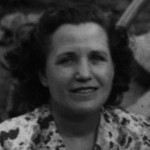
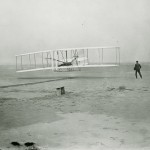 When my great aunt, Bertha Schumacher Hallgren passed way in 1984, much had changed in our world, in comparison to the world she found herself in as a young girl. To me, one of the most significant changes would have been in the area of flight…regular flight or space flight. Bertha was a very curious girl. She thought about things, and thought things through. That is the reason that she included facts of the times in her journal. I do wish she had published her works, because I think they would have been of great interest to a lot of people, even if they weren’t written about their family. The first flight took place when Bertha was just a young girl of four years, so she grew up knowing that flight was possible, but there is no indication in her writings, that she ever flew on a plane. The space program began in 1961, so she saw space flight too, and I’m quite certain that she really thought that was an amazing feat, but it did not make it into her writings either. Perhaps, by that time in her life, she thought that there just wouldn’t be much interest in her writings, aside from possibly her sister, Mina Spare’s daughter, Pauline, and later maybe her grandchildren, who were given a copy of the journal, thereby preserving this amazing book, whether accidental or not.
When my great aunt, Bertha Schumacher Hallgren passed way in 1984, much had changed in our world, in comparison to the world she found herself in as a young girl. To me, one of the most significant changes would have been in the area of flight…regular flight or space flight. Bertha was a very curious girl. She thought about things, and thought things through. That is the reason that she included facts of the times in her journal. I do wish she had published her works, because I think they would have been of great interest to a lot of people, even if they weren’t written about their family. The first flight took place when Bertha was just a young girl of four years, so she grew up knowing that flight was possible, but there is no indication in her writings, that she ever flew on a plane. The space program began in 1961, so she saw space flight too, and I’m quite certain that she really thought that was an amazing feat, but it did not make it into her writings either. Perhaps, by that time in her life, she thought that there just wouldn’t be much interest in her writings, aside from possibly her sister, Mina Spare’s daughter, Pauline, and later maybe her grandchildren, who were given a copy of the journal, thereby preserving this amazing book, whether accidental or not.
By the time Bertha passed away in 1984, she had seen the first Space Shuttle launch that took place on April 12, 1981. I have to think that she must have been very much amazed that a plane could fly into space, and return to earth again with the ability to land using its own power, to land not by dropping in the ocean, as had 
 always been the case, but rather by landing on a runway, just like a regular plane. Unfortunately, the placement of the Hubble Space Telescope came to pass just six years after Bertha’s passing, on this day, April 25, 1990. I find that particularly sad, because I think she would have loved that. I can picture her watching the news on television just to catch a glimpse of the space that surrounds our own galaxy. And I can picture her look of wonder as she thought about this amazing world of change that we live in. It was a place that always fascinated her, and I know that it did until the day she died.
always been the case, but rather by landing on a runway, just like a regular plane. Unfortunately, the placement of the Hubble Space Telescope came to pass just six years after Bertha’s passing, on this day, April 25, 1990. I find that particularly sad, because I think she would have loved that. I can picture her watching the news on television just to catch a glimpse of the space that surrounds our own galaxy. And I can picture her look of wonder as she thought about this amazing world of change that we live in. It was a place that always fascinated her, and I know that it did until the day she died.
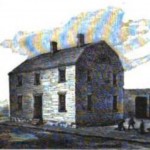 These days there are so many public schools in the United States, that they have become something we give little thought to. That was not always the case, however. As people moved West to populate this great nation, many mothers had to homeschool their children. Eventually, schools began to spring up across the prairie, but what about the schools back East. This nation didn’t always have schools. Things had to be established first. And considering the fact that America was discovered in 1492, it would seem to me that the schools were a bit behind the times. The first public school in the United States, was established on this day, April 23, 1635, in Boston, Massachusetts. The school was called the Boston Latin School. At the time the school was formed, English was not the only language spoken in the United States, so learning Latin, which was considered to be the root of European language, was also a priority, as it was with grammar schools in
These days there are so many public schools in the United States, that they have become something we give little thought to. That was not always the case, however. As people moved West to populate this great nation, many mothers had to homeschool their children. Eventually, schools began to spring up across the prairie, but what about the schools back East. This nation didn’t always have schools. Things had to be established first. And considering the fact that America was discovered in 1492, it would seem to me that the schools were a bit behind the times. The first public school in the United States, was established on this day, April 23, 1635, in Boston, Massachusetts. The school was called the Boston Latin School. At the time the school was formed, English was not the only language spoken in the United States, so learning Latin, which was considered to be the root of European language, was also a priority, as it was with grammar schools in 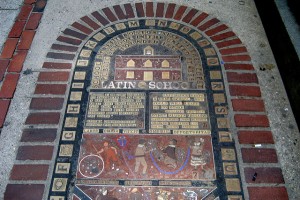 England. Seventeenth-century schoolboys throughout Europe, Catholic or Protestant, learned Latin, and which explains the focus of Boston Latin.
England. Seventeenth-century schoolboys throughout Europe, Catholic or Protestant, learned Latin, and which explains the focus of Boston Latin.
One of the main reasons for education, as far as the Puritans were concerned, was to be able to read the Bible. One of the main reasons for the pilgrimage to the new world was religious freedom, and they felt like it was essential that their students be schooled in the important languages, so they could read the Bible and other important books for themselves. Boston Latin School has prided itself on the number of its students who attended Harvard, or some of the other prestigious four year college.
 When I think of the first school in the United States, and the history thereof, I think of my Aunt Bertha Schumacher Hallgren. She mentioned in her journal that in writing a family history, the author should mention things that are interesting about the times the people in the family lived in. She also had a type of love-hate relationship with school. As a young girl, all she really wanted to do was to stay at home with her mother, but she also understood the importance of a good education, for without it she would not have been able to get the jobs she was able to get, which were good jobs, especially for a woman at that time in history. Whether we enjoy school or not, it is a gateway to almost every opportunity there is, and in the United States, it started with Boston Latin School.
When I think of the first school in the United States, and the history thereof, I think of my Aunt Bertha Schumacher Hallgren. She mentioned in her journal that in writing a family history, the author should mention things that are interesting about the times the people in the family lived in. She also had a type of love-hate relationship with school. As a young girl, all she really wanted to do was to stay at home with her mother, but she also understood the importance of a good education, for without it she would not have been able to get the jobs she was able to get, which were good jobs, especially for a woman at that time in history. Whether we enjoy school or not, it is a gateway to almost every opportunity there is, and in the United States, it started with Boston Latin School.
 We have all heard of the World’s Fair, and I think most of us know about the big push between nations to have it held in their country. After World War II, the United States didn’t get to host the World’s Fair until April 21, 1962. I think that most of us knows of the Seattle Space Needle, and I think that most adults know that it was a part of the World’s Fair, also known as the Century 21 Exposition. The fair ran from April 21, 1962 to October 21, 1962, in Seattle, Washington, of course.
We have all heard of the World’s Fair, and I think most of us know about the big push between nations to have it held in their country. After World War II, the United States didn’t get to host the World’s Fair until April 21, 1962. I think that most of us knows of the Seattle Space Needle, and I think that most adults know that it was a part of the World’s Fair, also known as the Century 21 Exposition. The fair ran from April 21, 1962 to October 21, 1962, in Seattle, Washington, of course.
Nearly 10 million people attended the fair in Seattle that year. So many World’s Fairs did not make a profit, but unlike the other world’s fairs of that era, Century 21 did make a profit. After the expedition, Seattle 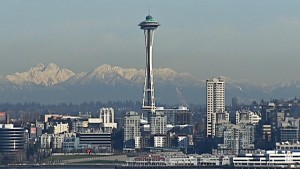 was left with a fairground and many public buildings and public works. It really revitalized Seattle’s economic and cultural life. The Space Needle was built there, of course, and the Alweg monorail, as well as several sports venues…Washington State Coliseum, now Key Arena and performing arts buildings…the Playhouse, now the Cornish Playhouse. Many of these have been remodeled or replaced now, but the whole area started around the World’s Fair. The Space Needle was built to withstand wind speeds of 200 mph, double the requirements in the building code of 1962. An earthquake registering 6.8 on the Richter scale jolted the Needle enough in 2001 for water to slosh out of the toilets in the restrooms. The Space Needle will not sustain serious
was left with a fairground and many public buildings and public works. It really revitalized Seattle’s economic and cultural life. The Space Needle was built there, of course, and the Alweg monorail, as well as several sports venues…Washington State Coliseum, now Key Arena and performing arts buildings…the Playhouse, now the Cornish Playhouse. Many of these have been remodeled or replaced now, but the whole area started around the World’s Fair. The Space Needle was built to withstand wind speeds of 200 mph, double the requirements in the building code of 1962. An earthquake registering 6.8 on the Richter scale jolted the Needle enough in 2001 for water to slosh out of the toilets in the restrooms. The Space Needle will not sustain serious 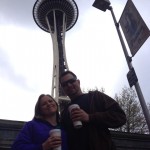 structural damage during earthquakes of magnitudes below 9. I think it is an amazing structure.
structural damage during earthquakes of magnitudes below 9. I think it is an amazing structure.
Since my daughter, Amy Royce and her family have moved to northern Washington, we have had the opportunity to visit the area and the Space Needle. I had been there before, but my husband, Bob had not. It doesn’t matter how many times you go up in the Space Needle, because each time is spectacular. The view is amazing, and since you can walk all the way around it, you have a different view on each side. The area is beautiful to be sure. I don’t know how often Amy and her family will get down there, now that they have moved to the Bellingham/Ferndale area, but I don’t think I would live that close without taking a trip to see a little bit of history once in a while.
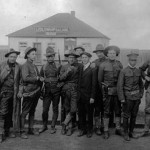 When strikes occur, emotions can get out of control. Sometimes, tensions get so high that they hit the breaking point, and people die. The year was 1914. The date was April 20th. The place was Ludlow, Colorado, and things were about to get out of control. The strike began the previous September, when about 11,000 miners in southern Colorado went on strike against the powerful Colorado Fuel and Iron Corporation. They were protesting low pay, dangerous working conditions, and the company’s autocratic dominance over the workers’ lives. The company was owned by the Rockefeller family and Standard Oil. They responded to the strike by immediately evicting the miners and their families from company-owned housing, which were basically shacks. The United Mine Workers stepped in to help. The miners moved with their families to canvas tent colonies scattered around the nearby hills and the strike continued.
When strikes occur, emotions can get out of control. Sometimes, tensions get so high that they hit the breaking point, and people die. The year was 1914. The date was April 20th. The place was Ludlow, Colorado, and things were about to get out of control. The strike began the previous September, when about 11,000 miners in southern Colorado went on strike against the powerful Colorado Fuel and Iron Corporation. They were protesting low pay, dangerous working conditions, and the company’s autocratic dominance over the workers’ lives. The company was owned by the Rockefeller family and Standard Oil. They responded to the strike by immediately evicting the miners and their families from company-owned housing, which were basically shacks. The United Mine Workers stepped in to help. The miners moved with their families to canvas tent colonies scattered around the nearby hills and the strike continued.
The company had depended on the evictions to end the strike, but when that failed, they hired private detectives to attack the tent colonies with rifles and Gatling guns. The miners fought back and several were killed. The company began to realize that the strikers were determined so Colorado Fuel and Iron Corporation contacted the governor of Colorado, who authorized the use of the National Guard, provided they agree to pay their wages. The strikers mistakenly thought that the governor has sent the National Guard to protect them, but that couldn’t have been further from the truth. The National Guard was under orders to stop the strike…no matter what the cost might be. The National Guard attacked the strikers on April 20, 1914. Two companies of guardsmen attacked the largest tent colony of strikers near the town of Ludlow, home to about 1,000 men, women, and children. The attack began in the morning with a barrage of bullets fired into the tents. The miners shot back with pistols and rifles.
A strike leader was killed while trying to negotiate a truce, and the strikers, fearing that the attacks might intensify. They tried to placed the women and children in pits they had dug beneath the tents. At sunset, the 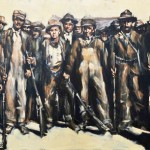 guardsman moved down from the hills and set the tent colony on fire with torches, shooting at the families as they fled into the hills. It wasn’t until the next morning that they discovered the true carnage of their attack. A telephone linesman discovered a pit under one of the tents filled with the burned remains of 11 children and 2 women. The Ludlow Massacre outraged many Americans, nevertheless, the tragedy did little to help the Colorado miners and their families. Federal troops were sent to assure the end of the strike, and the strike failed to achieve any significant improvement in their wages and working conditions. Sixty-six men, women, and children died during the strike, but not a single militiaman or private detective was charged with any crime. Sometimes, the worst injustice comes from the very people who are supposed to protect us.
guardsman moved down from the hills and set the tent colony on fire with torches, shooting at the families as they fled into the hills. It wasn’t until the next morning that they discovered the true carnage of their attack. A telephone linesman discovered a pit under one of the tents filled with the burned remains of 11 children and 2 women. The Ludlow Massacre outraged many Americans, nevertheless, the tragedy did little to help the Colorado miners and their families. Federal troops were sent to assure the end of the strike, and the strike failed to achieve any significant improvement in their wages and working conditions. Sixty-six men, women, and children died during the strike, but not a single militiaman or private detective was charged with any crime. Sometimes, the worst injustice comes from the very people who are supposed to protect us.
 Running for exercise has not always been as common an occurrence as it is these days. Before machinery, cars, and other modern conveniences, people walked to many of the places they went, and so the thought of specifically walking or running to get exercise was pretty foreign. Nevertheless, there were races, and sporting events, so it wasn’t unheard of to run or walk for exercise. Most people have heard of the Boston Marathon…especially after the bombing that took place there April 15, 2013. The marathon has been a runners biggest goal since its first event, held on April 19, 1897. The marathon was an event that came from the dream of Boston Athletic Association member and inaugural US Olympic team manager, John Graham, who was inspired by the marathon at the first modern Olympic Games in Athens in 1896. He immediately set out to bring the race home to the United States. Graham enlisted the help of Herbert H Holton, a Boston businessman. They considered various routes, before a measured distance of 24.5 miles from the Irvington Oval in Boston to Metcalf’s Mill in Ashland was eventually selected.
Running for exercise has not always been as common an occurrence as it is these days. Before machinery, cars, and other modern conveniences, people walked to many of the places they went, and so the thought of specifically walking or running to get exercise was pretty foreign. Nevertheless, there were races, and sporting events, so it wasn’t unheard of to run or walk for exercise. Most people have heard of the Boston Marathon…especially after the bombing that took place there April 15, 2013. The marathon has been a runners biggest goal since its first event, held on April 19, 1897. The marathon was an event that came from the dream of Boston Athletic Association member and inaugural US Olympic team manager, John Graham, who was inspired by the marathon at the first modern Olympic Games in Athens in 1896. He immediately set out to bring the race home to the United States. Graham enlisted the help of Herbert H Holton, a Boston businessman. They considered various routes, before a measured distance of 24.5 miles from the Irvington Oval in Boston to Metcalf’s Mill in Ashland was eventually selected.
Fifteen runners started that first race, but only ten would finish. The winner was John J McDermott, who finished with a time of 2 hours, 55 minutes, and 10 seconds. McDermott was sponsored by the Pastime Athletic Club of New York City. He took the lead from Harvard athlete, Dick Grant over the hills in Newton. He did walk several times during the final miles, but still won by a comfortable margin of 6 minutes and 52 seconds. He had only won one other marathon in the United States…the previous October in New York City.
As most people know, a marathon is normally 26.2 miles, and the original Boston Marathon was only 24.5. That was changed in 1908 so that it would be in compliance with the rules of a marathon. The marathon was originally held on Patriot’s Day, April 19, a holiday that commemorates the beginning of the Revolutionary War. When Patriot’s Day fell on Sunday, the race was held the following Monday. Then when Patriot’s Day was made a Monday holiday in 1969, the Boston Marathon moved with it, and it has been that way since that time.
Originally, women were not allowed to run in the Boston Marathon, which made a lot of women angry. That rule finally changed in 1972, but not without a few missteps first. In 1966, Roberta “Bobbi” Gibb decided to fight the system. She became the first woman to run the entire Boston Marathon, but had to hide in the bushes near the start until the race began. In 1967, Kathrine Switzer, who had registered as “K. V. Switzer”, was the first woman to run with a race number. Switzer finished even though officials tried to physically remove her from the race after she was identified as a woman. In the fall of 1971, the Amateur Athletics Union permitted 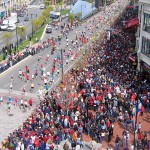 its sanctioned marathons, including Boston, to allow women to enter. Nina Kuscsik became the first official female participant to win the Boston Marathon in 1972. Seven other women started and finished that race. In 1975, the Boston Marathon became the first major marathon to include a wheelchair division competition, which Bob Hall won in 2 hours, 58 minutes.
its sanctioned marathons, including Boston, to allow women to enter. Nina Kuscsik became the first official female participant to win the Boston Marathon in 1972. Seven other women started and finished that race. In 1975, the Boston Marathon became the first major marathon to include a wheelchair division competition, which Bob Hall won in 2 hours, 58 minutes.
Exercise has become a regular part of the lives of many people these days, whether they walk, run, bicycle, or some other form of exercise. While I can’t imagine myself running in a marathon…or any other race, I could see myself walking such a distance. Once you get started with exercise, it can become very addictive, and that’s ok too.
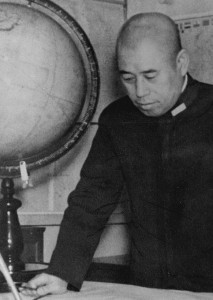 Some soldiers, no matter what side they are on or what branch of service they are in, are so good at what they do, that they become a must kill to the enemy. Admiral Isoroku Yamamoto was just such a soldier. Yamamoto held several important posts in the Imperial Japanese Navy, and undertook many of its changes and reorganizations, especially its development of naval aviation. He was the commander-in-chief during the early years of the Pacific War and so was responsible for major battles such as Pearl Harbor and Midway. That meant that the Unites States had a score to settle with the admiral. Nevertheless, this would be no easy task. The Japanese codes were difficult to break, and so locating the admiral at a time when they could be prepared to shoot him down was not going to be easy.
Some soldiers, no matter what side they are on or what branch of service they are in, are so good at what they do, that they become a must kill to the enemy. Admiral Isoroku Yamamoto was just such a soldier. Yamamoto held several important posts in the Imperial Japanese Navy, and undertook many of its changes and reorganizations, especially its development of naval aviation. He was the commander-in-chief during the early years of the Pacific War and so was responsible for major battles such as Pearl Harbor and Midway. That meant that the Unites States had a score to settle with the admiral. Nevertheless, this would be no easy task. The Japanese codes were difficult to break, and so locating the admiral at a time when they could be prepared to shoot him down was not going to be easy.
Finally, on April 18, 1943, the code breakers successfully broke the code, leaving the admiral vulnerable to attack, and Operation Vengence was born. The sole purpose of this mission was to kill Admiral Isoroku Yamamoto. The mission took place during the Solomon Islands campaign in the Pacific Theater of World War II. The code breakers found out that the admiral was set to be onboard a transport plane that would be flying over Bougainville Island. With everything finally in place, his transport bomber aircraft was shot down by United States Army Air Forces fighter aircraft operating from Kukum Field on Guadalcanal. It was a day to celebrate. The United States had been nursing a black eye where Pearl Harbor was concerned, and they had been looking to settle the score. Operation Vengence was the victory they had been waiting for.
The admiral’s death was a major blow to Japanese 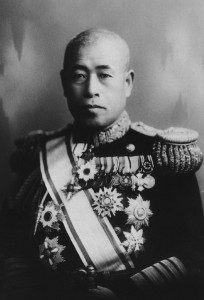 military morale during World War II, and was a major boost to the Allied Forces. The operation was intended as revenge for the Pearl Harbor attack which initiated the formal state of war between Imperial Japan and the United States.
military morale during World War II, and was a major boost to the Allied Forces. The operation was intended as revenge for the Pearl Harbor attack which initiated the formal state of war between Imperial Japan and the United States.
After the war, there was debate over which of the US fighter pilots involved in the raid deserved the official credit for downing Yamamoto due to conflicting first-hand reports from the participants, and has never been entirely resolved. I suppose that for the pilots it was a big deal, but for the US citizens it wasn’t the pilot that mattered, but rather that the mission had been successful. Americans hate to lose, and we will go after the villan who dared to attack us.
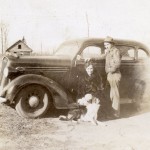
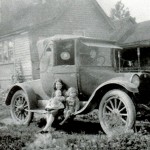 Most cars, these days, have a fairly streamlined design. Much of this is to make them more fuel efficient, and to make the ride less wind resistant, and therefore smoother, I’m sure. It wasn’t always that way, however. For a time, running boards were quite fashionable, and most cars had them. I never could really see the draw to that, because in reality, actually stepping on the running boards, to get into the car, loosens them, and will eventually cause them to need to be reinforced. I suppose my opinion on this comes from my 41 years married to a mechanic, but it is nevertheless, a reality. Many of the cars from my parents’ and in-laws’ era had running boards, especially the pickups, but it is something that is not seen as much these days, and if it is, it is usually something that was added later on, and as I said, not really for use as a way to enter the vehicle, but rather for show.
Most cars, these days, have a fairly streamlined design. Much of this is to make them more fuel efficient, and to make the ride less wind resistant, and therefore smoother, I’m sure. It wasn’t always that way, however. For a time, running boards were quite fashionable, and most cars had them. I never could really see the draw to that, because in reality, actually stepping on the running boards, to get into the car, loosens them, and will eventually cause them to need to be reinforced. I suppose my opinion on this comes from my 41 years married to a mechanic, but it is nevertheless, a reality. Many of the cars from my parents’ and in-laws’ era had running boards, especially the pickups, but it is something that is not seen as much these days, and if it is, it is usually something that was added later on, and as I said, not really for use as a way to enter the vehicle, but rather for show.
Be that as it may, running boards were something that used to be important, so they say, because of the fact that vehicles were higher off the ground back in the day, than they are now. The fashionable running boards of this day and age are pretty narrow, and really aren’t very much like the old ones at all. The old running boards were wide, and could easily be used for a seat, or even to give enough room for an adult to lie down on them. I remember my mom telling me about one of her brothers who used to take an afternoon nap out on the running board of my grandfather’s car. I always thought that was rather comical, but she used to say that her dad always had to walk around the car to make sure there wasn’t a kid on the running board on the other side, before he could leave for wherever he was going.
It also seems that the running boards of a car make a great place to gather the family for pictures, because 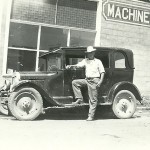
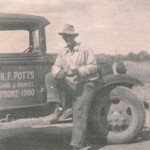 there are pictures of people sitting or standing on the running boards among my family’s pictures, as well as Bob’s family’s pictures. The car seems to have been the backdrop of choice at that time. I suppose it ‘s not so different today. People like their cars, and they are a part of life, with or without running boards, so why not include them in your pictures sometimes…especially if they are a hot car, which I’m sure was the case at the time, even if we wouldn’t think so these days. The look of cars changes from era to era, and while the big clunkers of old, were not the sporty cars of today, they were cool then.
there are pictures of people sitting or standing on the running boards among my family’s pictures, as well as Bob’s family’s pictures. The car seems to have been the backdrop of choice at that time. I suppose it ‘s not so different today. People like their cars, and they are a part of life, with or without running boards, so why not include them in your pictures sometimes…especially if they are a hot car, which I’m sure was the case at the time, even if we wouldn’t think so these days. The look of cars changes from era to era, and while the big clunkers of old, were not the sporty cars of today, they were cool then.

